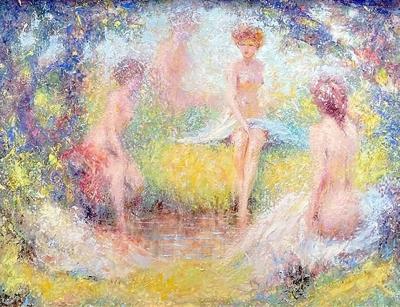William Henry Clapp
American, 1879 - 1954
William Henry Clapp (1879–1954) was a Canadian-American Impressionist painter and influential curator based in Oakland, California. Born in Montreal to American parents, he moved with his family to Oakland in childhood, then returned to Montreal around 1900 to study under William Brymner, alongside notable peers like Clarence Gagnon. From 1904 to 1908, he honed his Impressionist and Pointillist techniques at the Académie Julian, Académie de la Grande Chaumière, and Académie Colarossi in Paris—and traveled through Belgium and Spain.
Back in Montréal (1908–1915), Clapp produced vibrant, broken‑colour landscapes that earned him acclaim within the Canadian Impressionist movement. He then spent two years in Cuba before permanently relocating to Oakland in 1917. There, he co‑founded the Society of Six, a pioneering Californian plein-air group, and served as director (1918–1952) of the Oakland Art Gallery (now part of the Oakland Museum), where he championed modern art and facilitated exhibitions by Kandinsky and Klee. Clapp’s luminous landscapes and figure paintings, marked by high-keyed light and lively brushwork, remain held in major collections including the National Gallery of Canada and the Smithsonian American Art Museum.
Back in Montréal (1908–1915), Clapp produced vibrant, broken‑colour landscapes that earned him acclaim within the Canadian Impressionist movement. He then spent two years in Cuba before permanently relocating to Oakland in 1917. There, he co‑founded the Society of Six, a pioneering Californian plein-air group, and served as director (1918–1952) of the Oakland Art Gallery (now part of the Oakland Museum), where he championed modern art and facilitated exhibitions by Kandinsky and Klee. Clapp’s luminous landscapes and figure paintings, marked by high-keyed light and lively brushwork, remain held in major collections including the National Gallery of Canada and the Smithsonian American Art Museum.
